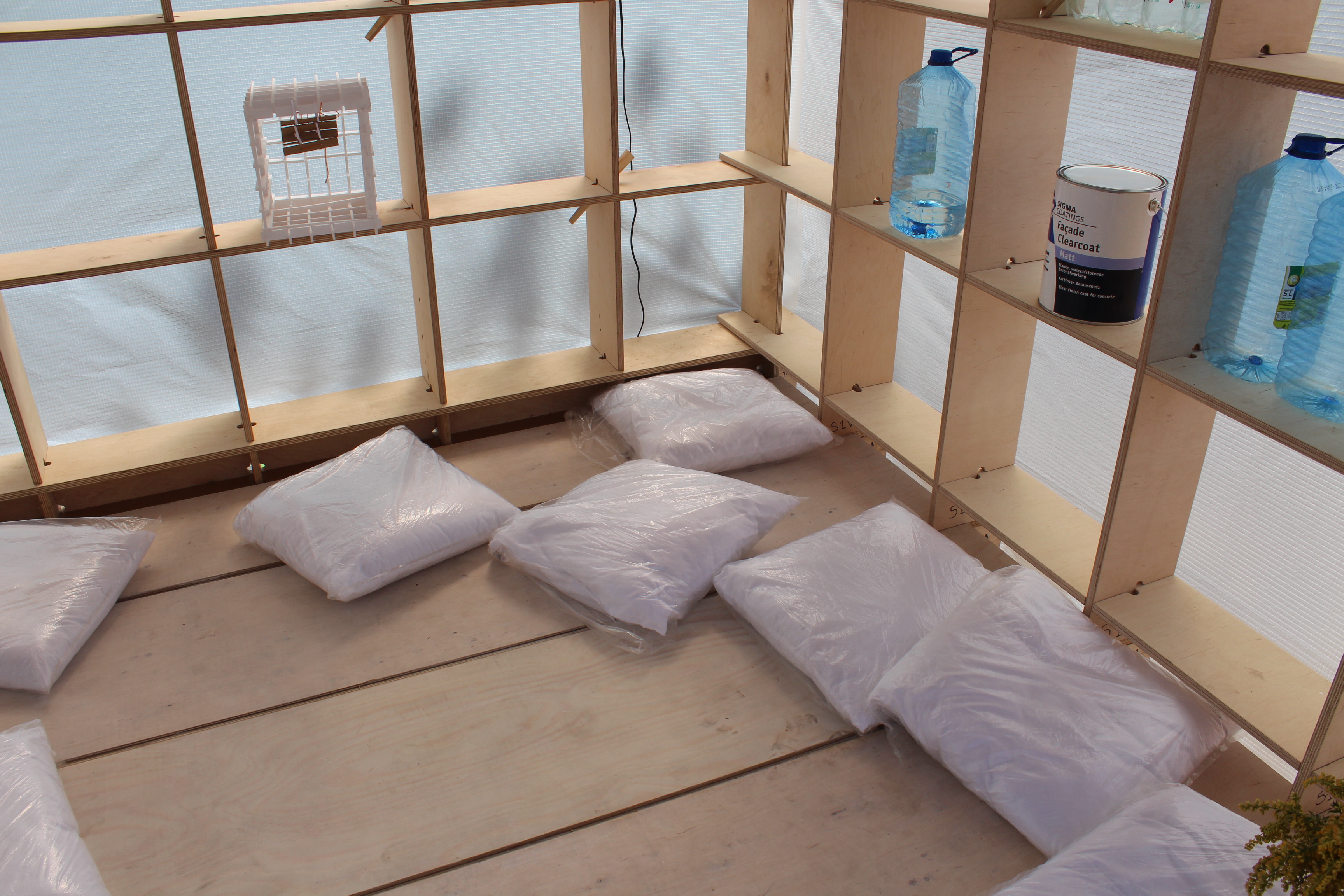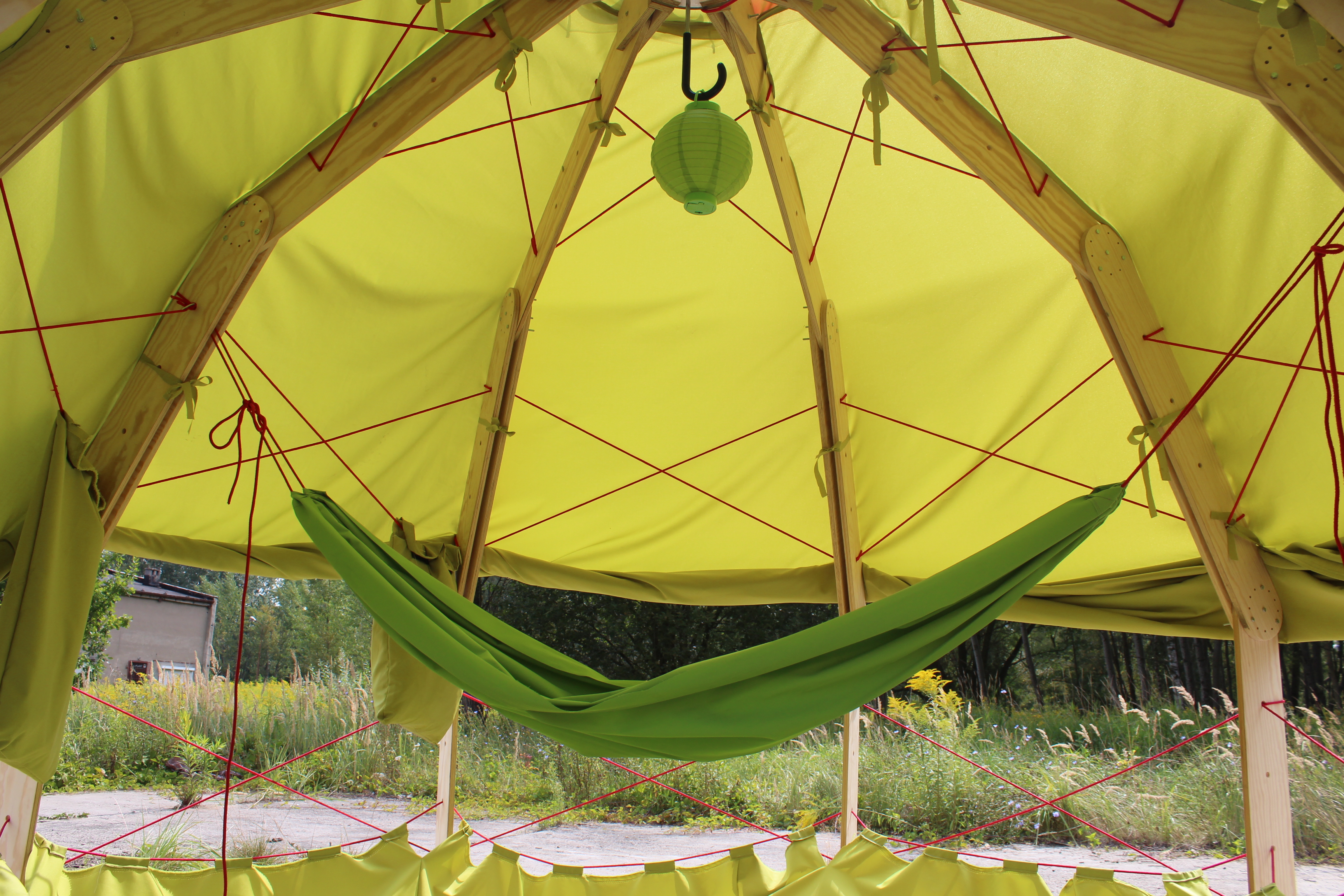YOUR BROWSER IS OUT-OF-DATE.
We have detected that you are using an outdated browser. Our service may not work properly for you. We recommend upgrading or switching to another browser.
Date: 21.08.2016 Category: student activity
Four residential structures which may be used as shelters for refugees or survivors of natural disasters have been developed at Wrocław University of Science and Technology. They were designed and made by 30 students from Poland and the Netherlands during the Summer School of Architecture.
The project was carried out in August by students of Wrocław University of Science and Technology and the Dutch Technical University of Delft. Their task consisted in designing and constructing a basic "living unit", which could be used by a family or an individual person.

- All of the students had to first deliver a brief presentation of the design they'd developed. Then, they were divided into groups according to the similarity of concepts they had when devising their proposals or the type of construction solutions they presented – says Jerzy Łątka, a doctoral student of Wrocław University of Science and Technology, the originator and co-head of the Summer School of Architecture.
As a result, four teams were formed to work on common projects, supervised by researchers including Marcel Bilow PhD of the Netherlands. Mr Bilow is the head of the Bucky Lab team undertaking activities which involve prototyping and devising innovative solutions in architectural structures and façade elements.
Once the designs were ready, the participants in the project commenced constructing them. The students took nine days to work at the facility of Wrocław University of Science and Technology in Kowalska street. Their effort resulted in four exceptionally original prototypes of homes for people in need of shelter.
The first of the homes presented by the students was dome-shaped and featured green, waterproof coating. Its design comprises a single easily configurable element, meaning that by adding more parts one may expand the dome or convert it into a tunnel applying a different arrangement of components.

Another proposal drew on the Japanese tea pavilions. – The whole construction can be assembled without using any tools, nails or screws – somewhat resembling a jigsaw puzzle. It was made from wood and a waterproof material, with pillows hidden in the floor and walls which also serve as shelves – explained Marta Jastrzębska, a student of Wrocław University of Science and Technology.
The orange construction was designed in mind with the homeless. There is a bed in the 5 sq m interior, as well as a folding table. On the outside, it resembles a stairway. – What we have here is a strong social message. You can live inside, while the external part is used for social purposes. In addition, the first two steps can be opened and used as storage compartments – elaborates Łątka.
The last structure presented accommodates two people. The octagonal walls of the very light and portable home can be assembled in just a few minutes.
After completing the workshops, the students will also have to prepare information about their projects, including detailed construction data, their inspirations, and practical possibilities of using the residential units. In late October and early November, all four projects will be displayed on the square by the Bibliotech building.
The workshops were held under the auspices of the European Capital of Culture Wrocław 2016.
Our site uses cookies. By continuing to browse the site you agree to our use of cookies in accordance with current browser settings. You can change at any time.